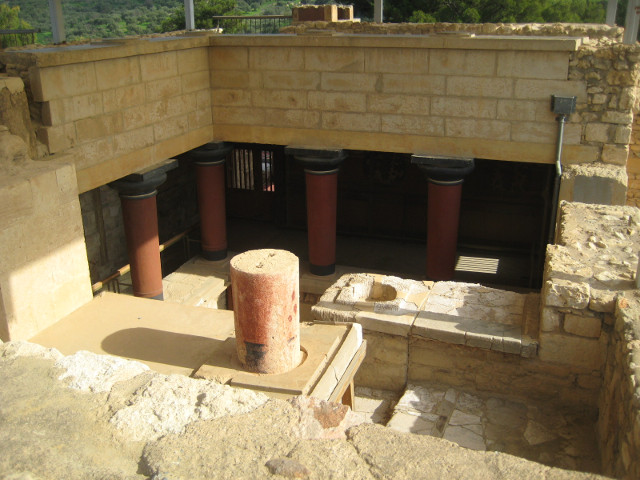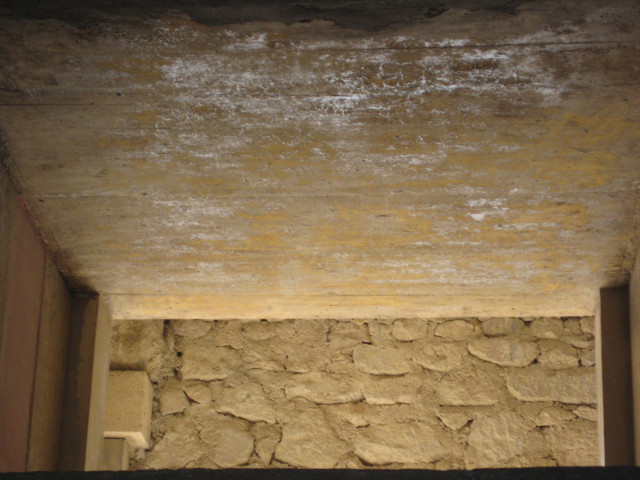Mon 23.Nov.2009
Hania, Crete, Greece
"This time for sure."
- B. Moose
OK. Armed with my knowledge of the actual opening hours, I
returned the next day to Knossos, capital of a major civilization that
was already in its heyday in 2000 BC - as long before the founding of
Rome (509 BC) as we are after the fall of Rome. This place goes back
1500 years before Athens and the parthenon; it is by far the oldest
city I have ever visited. I paid my six Euro, and here goes....


Peacocks stroll unconfined near the entrance. Peahens too.
Time Tunnel
I don't remember whether this tunnel
does something structural, or is just a decorative arbor.
It connects the entrance area to the actual palace complex.


What a pair of jugs!
Sorry, couldn't resist. These things stand 4-5 feet (~1..5m) tall. If
you can't hoist yours, no beer for you.
Until about 1900 AD, Knossos was considered purely legendary / mythical
- King Minos, Labyrinth, Minotaur etc.
An English archaeologist named Arthur Evans changed all that by finding
the real thing. In the course of his diggings, he controversially
"restored" some portions, often according to little more than his own
conjecture.
The restorations help visualize the scale of what might have been on
their foundations. Are they correct in their actual appearance? Debates
still rage among the experts. Let's leave them to it. What you see is
what is here.


This place was vast, also many leveled. The visitor entrance is at the
top, so you only slowly realize the number of levels running down the
hillside.
An Historical Puzzle


As I understand it, Minoan civilization, as these folks are called,
lasted many centuries, and only in the later layers of their remains is
there any trace of weapons. So they apparently built the Knossos palace
complex, and their other cities, and ran a major civilization without
serious violence?


I can understand if the ocean kept them safe from external enemies
(except of course, Santorini).
But were these massive palace complexes not built by slaves? Nobody
volunteers to be a slave.
(As Frederick Douglas said millenia later, there is not a man alive who
does not know that slavery is wrong for himself.) I don't buy that the
enormous manpower that built and operated this complex was enslaved
peacefully. So umm... how did those Minoans pull it off?


Later: I got this response from a history and classics major.
I have no idea of how Knossos was
built or how the archaeologists
explain
the absence of weapons.
I do know, however, that the many great European cathedrals were not
built
by slaves. They were built by paid laborers - and sometimes
not-so-paid
peasant labor, many of whom actually did labor if not for the glory
of
God
then for the peaceful repose of their own souls.
It is even surmised these days that some of the Egyptian tombs and
temples
may have been built in much the same way and for much the same
reasons.


OK... away from that lecturn!
Let's keep on looking at this remarkable place.


Contents Copyright 2012 Jeff Bulf















